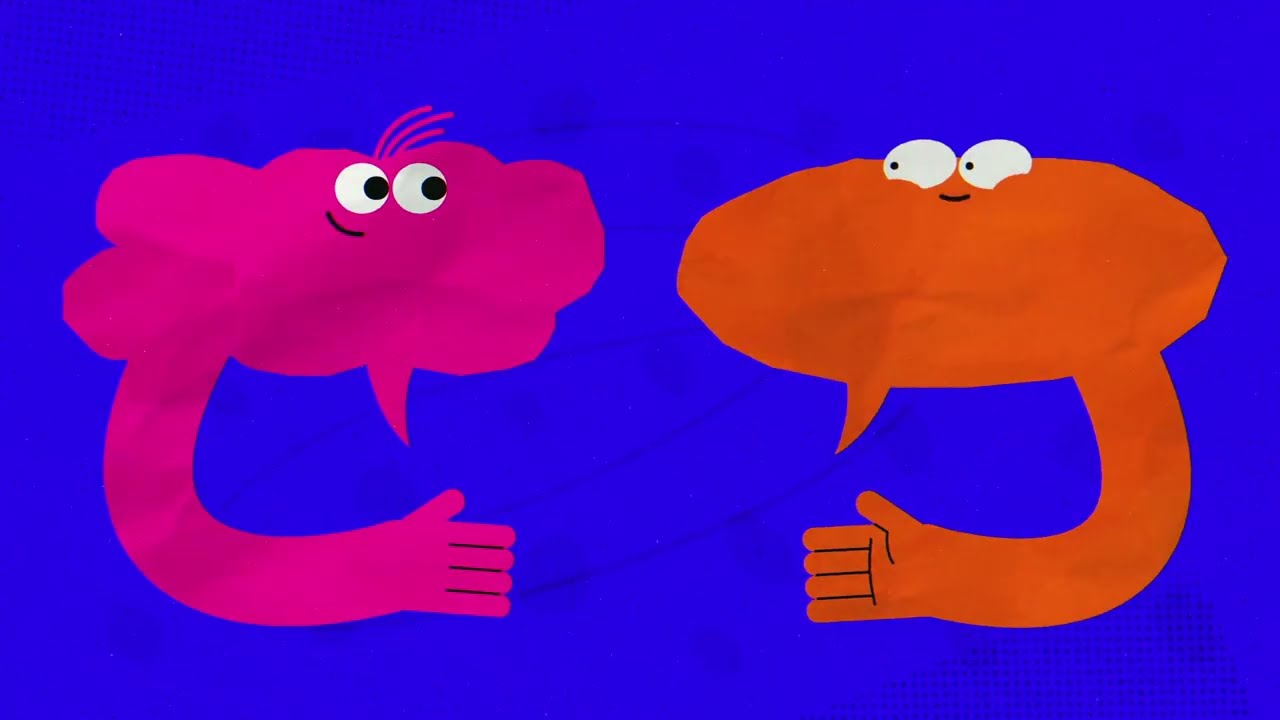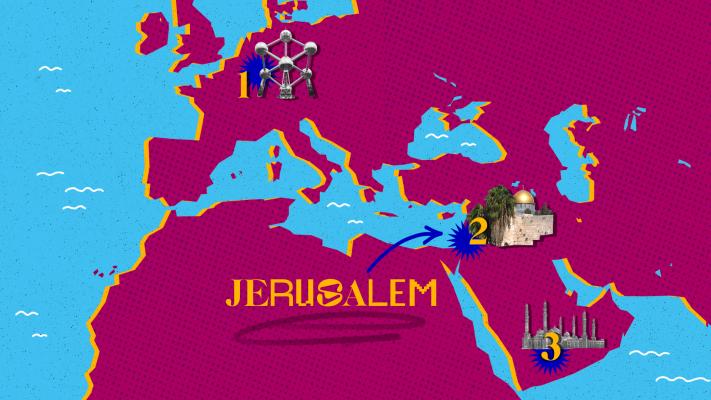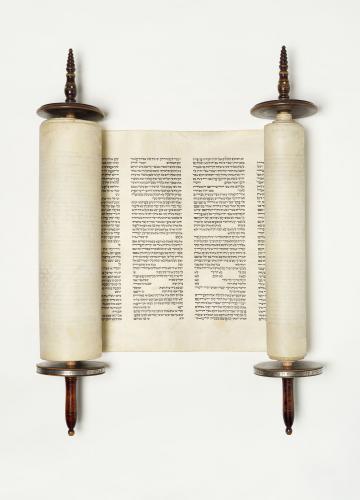Hebrew
Students explore Hebrew as a Jewish language by learning about its history. They explore the uniqueness of Hebrew vowels, learn to write their own names, and hear the different ways Hebrew is pronounced around the world. They are also encouraged to reflect on languages and words in their own lives.
Sections45 minGrades 7–8
- Hello! שלום
- Hebrew for Beginners
- 22 Letters
- Sound
- Your Languages?


Learning Objectives
Discover
Discover Hebrew as an important language in Judaism.
Understand
Engage with Hebrew to gain a better understanding of the Jewish diaspora.
Apply
Learn about what makes the Hebrew alphabet unique and how to write your name in Hebrew.
Reflect
Think about the significance of languages and words in your own life.
Progress
What Is Your Role As a Teacher?
Even though students will be working on individual screens, an important part of learning happens together in the classroom. As the teacher, your role is to facilitate discussions, guide students as they share their results, and supervise them as they watch and listen to media together. Poll results are displayed anonymously, while text responses show students’ names. The “Tips for Teachers” sections offer guidance on teaching strategies. The icon indicates the type of activity students are engaged in.
Discussion
Students discuss and share personal experiences. This may evoke emotional responses.
Hello! שלום
What Do You Think?
Do you know anything about Hebrew? Cast your vote!
Word Matching
Some of these words are used in English. Do you recognize them?
Look through these words and find the matching pairs.
Hebrew for Beginners
Take a Closer Look!
When and where did Hebrew originate? Watch the video to find out.

22 Letters
This is Hebrew
בתמונה רואים ילדים בברלין לומדים עברית עם משחק ב-1934
This is Hebrew. The Hebrew translates as: “The picture shows children in Berlin learning Hebrew with a game in 1934.” At the time, very few Jews in Germany used Hebrew as a spoken language, but they did sing in the language at synagogue during the holidays and study sacred texts in the original Hebrew.

Children learning Hebrew using alphabet tiles1
Word Puzzle
This photo highlights a unique feature of the Hebrew alphabet. Can you guess what it is? Find out by trying to read this text.
HY, WNT T LRN HBRW? THN Y HV T FLL N TH VWLS N YR HD. HV FN!
What is present in the photo but missing from the text?
Names in Hebrew
Here are five names written in both the Latin alphabet and the אָלֶף־בֵּית עִבְרִי (Hebrew alef-bet). Look at the names and match the pairs. Use the chart your teacher provided you as a guide.
Sound
This Is What the Torah Sounds Like
After the destruction of the Temple in Jerusalem by the Romans, Jews lived as a minority scattered all over the world. This is called the Diaspora. Jews brought their language and sacred texts with them to their new homes. Wherever they settled, they quickly learned the local languages. Interactions with their neighbors influenced their customs, traditions, food, and music. This also affected the sound and pronunciation of Hebrew. But how does Hebrew sound in different parts of the world?
Look at the Torah and then listen to three recordings.
(Swipe the Torah image to the left to access the audio files.)
Where Does the Sound Come From?
The same passage from the Torah is chanted in all three recordings. But the chanting sounds different depending on the region.
Match the recordings to the places on the map where they were made.

Put the list in the correct order
- Chanted by Ephraim Yaakov
- Chanted by Eliyahu Schleifer
- Chanted by Avraham Ben Moshe
Your Languages?
Which of the Questions Interests You?
After nearly 2,000 years, Hebrew has left traces all over the world. You can even find Hebrew words in many languages. Israeli Hebrew, like many languages, has borrowed numerous words from English.
Choose a question.
- Do you use any Yiddish words such as “shlep,” “nosh,” or “glitch”? How many languages do you use words from in your everyday life? Describe when, why, and how you use them.
- What do you think happens when a community no longer has a shared language?
- How many different languages do your classmates speak?
Provide this module to students
Simply share the module with your class using the QR code or link provided.


